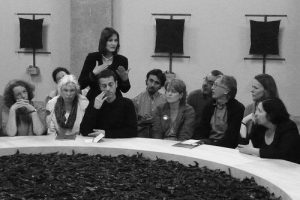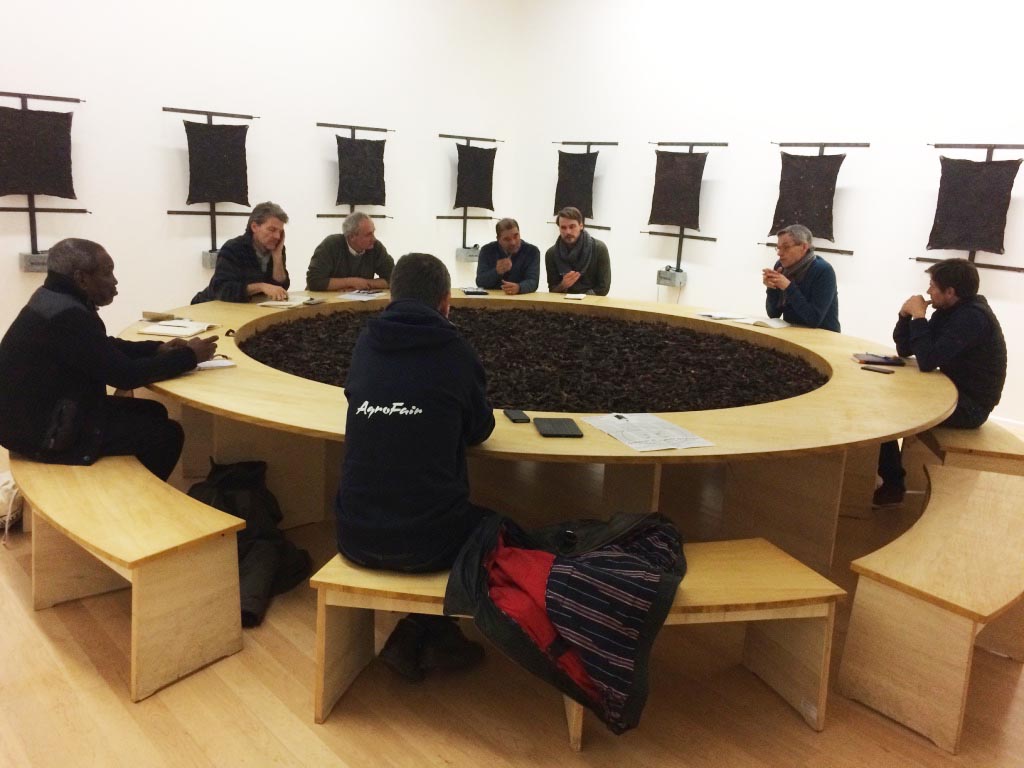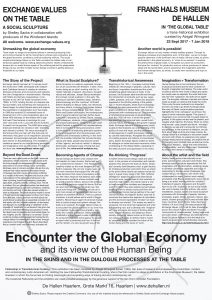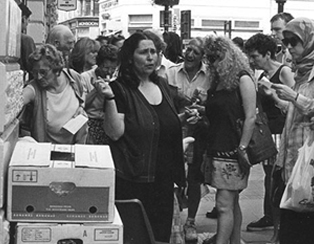The imaginal work with the producers in the Caribbean was an intensive social sculpture process: working with each producer in an ‘imaginal-work’ exchange using the invisible materials of speech, discussion, images, perceptions and attitudes.
However, once all the physical elements of Exchange Values were installed, on days when there was no organised forum, it functioned like a more traditional form of ‘socially engaged art’. Although it enabled consumers to individually enter the ‘invisible lives’ of the producers, there was no group process.
Many organised group processes took place in the Exchange Values arena between 1996 and 2006. These often included farmers’ representatives and campaigning groups. Although they were successful they did not include the kind of ‘connective practice’ that enables everyone to participate and to experience their own creative agency.
A Social Sculpture-Connective Practice
In 2007 Exchange Values was redeveloped to include a connective practice as an integral part of the work. A new physical element – a five metre table – was added to facilitate the structured connective practice at the table.
We worked at the table throughout 2007 in Dornach, Switzerland, as part of the international Ursache Zukunft conference. Here, with a number of co-workers -including Alex Arteaga, James Reed, Rosa van Wyk and Nicholas Stronczyk – we explored and developed ‘connective’ ways of working at the table.

Anke Lowenspung, with Alex Arteaga, James Reed, and Shelley Sacks, contributing to a forum with 60 participants, Ursache Zukunft Conference, Dornach 2007
Through the daily fora we developed understandings, practices and new language that became central in many University of the Trees/Social Sculpture Lab processes and in the Earth Forum, a mobile social sculpture practice which was developed for the COP Climate Summit / Climate Fluency Exchange in South Africa in 2011.
The structured process in Exchange Values at the table – even when there is not a specific theme – offers every participant the opportunity to understand their relationship to the global economy, to explore in what sense they are ‘an artist’, to consider what they ‘produce’, and what helps or hinders this. This process and the social sculpture / ‘connective aesthetics’ principles underlying it are detailed in the Exchange Values training handbook.
The new handbook will available to a wider public in autumn 2017.
Exchange Values – 11 years on, describes the shift from Exchange Values: Images of Invisible Lives -where the 10000 unnumbered skins were on the floor, to the 2007 version Exchange Values on the table.
………………………….



